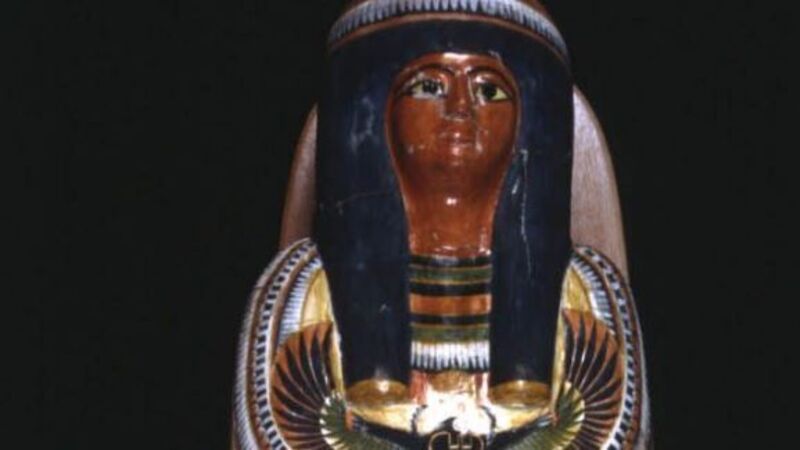Stolen moments in British Museum

Nowhere is this more evident than in the British Museum in London. Visiting it last week, my eye was drawn to a large slab of stone, about the height and width of a man, perched upon a formal plinth in the Great Court. It bore an inscription in ogham. On a plaque beneath, the crude translation of these elegant notches — read anti-clockwise — disclosed that the slab was originally raised in honour of ‘Vedac, son of Tob of the Sogain’. It was one of three 5th century ogham stones taken from Roovesmoor Rath — a ring fort outside Coachford, in West Cork — by the delightfully named General Augustus Henry Lane-Fox Pitt Rivers. He presented the group to the British Museum in 1866.
Pitt Rivers, who fought in the Crimean War, brought a scientific approach to archaeology. He catalogued all items found on digs, and not just those that seemed valuable, and his attention to detail vastly improved 19th century excavations, which had hitherto been conducted as glorified sackings.
The Roovesmoor Rath ogham stones were among more than 20,000 items of archaeological interest Pitt Rivers collected over several decades, and many of them are now housed in the museum named after him in Oxford. I’m sure he meant well in presenting the ogham stones to the British Museum, and because of his largesse many thousands, if not millions, of visitors are now aware of the ogham script, the earliest written record of the Irish language. But the stones belong in a rath in West Cork, not in a cultural institution in London.
The Great Court is home to other memorials. There is, for instance, a totem pole that was originally raised in honour of Chief Luuya’as, of the Eagle-Beaver Clan of the Nisga’a Nation, in what is now British Columbia. It is carved of red cedar wood, and is believed to date to around 1870.
The pole features a series of crests that describe legendary events in the clan’s history. The topmost carving is of a large, mythical, sharp-nosed bird. Beneath that is a thunderbird, and beneath that again is a pair of beavers, a mother and cub. At the base is a mythical sea creature, ‘Man Underneath’, shown catching a whale. A plaque states that the pole once featured an eagle on top, but this was lost “by the time of its purchase from the descendants of Chief Luuya’as in 1932.”
I’m sure the descendants of Chief Luuya’as had good reason to sell his beautiful memorial pole, and I am just as sure that it should now be given back.
Museums in Victoria and Ottawa have already committed to returning 300 items to the Nisga’a Nation, and these will be housed in the recently opened Nisga’a Museum, in the village of Laxgalts’ap, on the River Nass.
Beyond the Great Court is a series of gallery spaces. In the very first, visitors are greeted by a basalt statue from Easter Island, in the southeastern Pacific Ocean. It dates from about 1400, and is known as Hoa Hakananai’a (Stolen or Hidden Friend). It represents an ancestral figure, and was removed from a stone house in Orongo, a village at the centre of a birdman cult, which was restored in the 1970s. Anyone with a shred of sense would agree that it should be shipped back there at once.
And so it goes. Throughout the British Museum there are treasures from every corner of the world: the mummies of Egypt, robbed from the tombs of the Pharoahs; the ‘Elgin Marbles’, looted from the Parthenon in Athens; the Benin Plaques, stripped from a palace in Nigeria. Such acquisitions were once seen as a right of empire, but today they are best described as stolen goods, and all should be returned to their countries of origin.
The Greeks have not had much luck, yet, in seeking the repatriation of the Parthenon Marbles. Perhaps they have been too polite about it. This morning, I wrote to Neil MacGregor, director of the British Museum, adopting a suitably outraged tone as I demanded the immediate return of the Roovesmoor Rath ogham stones to West Cork. I will keep our readers posted on developments.










